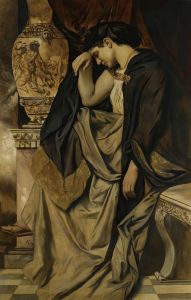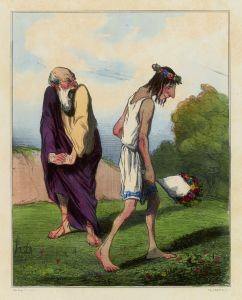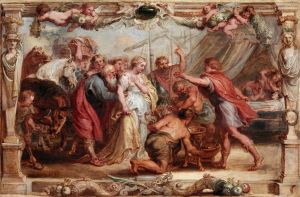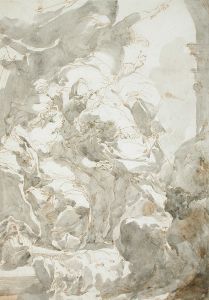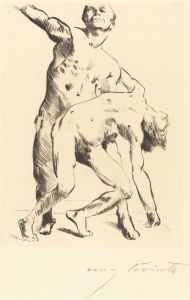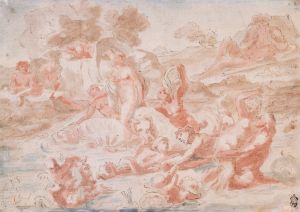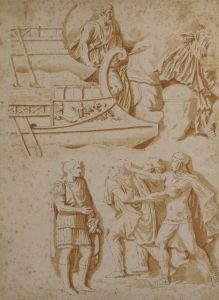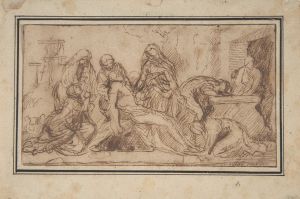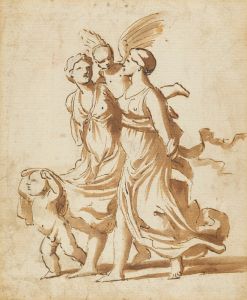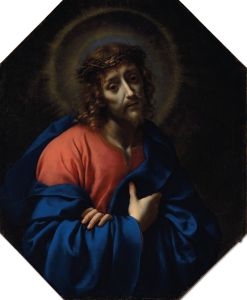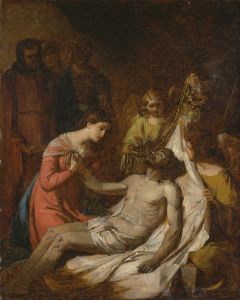
The Death of Hippolytus
A hand-painted replica of Nicolas Poussin’s masterpiece The Death of Hippolytus, meticulously crafted by professional artists to capture the true essence of the original. Each piece is created with museum-quality canvas and rare mineral pigments, carefully painted by experienced artists with delicate brushstrokes and rich, layered colors to perfectly recreate the texture of the original artwork. Unlike machine-printed reproductions, this hand-painted version brings the painting to life, infused with the artist’s emotions and skill in every stroke. Whether for personal collection or home decoration, it instantly elevates the artistic atmosphere of any space.
Nicolas Poussin's "The Death of Hippolytus" is a significant work by the French Baroque painter, known for his classical approach to composition and subject matter. Poussin, who spent a significant portion of his career in Rome, was deeply influenced by the classical antiquities and Renaissance art he encountered there. His works often reflect themes from ancient mythology, history, and the Bible, rendered with a focus on clarity, order, and emotional restraint.
"The Death of Hippolytus" depicts a scene from Greek mythology, specifically the tragic story of Hippolytus, the son of Theseus, the king of Athens. According to myth, Hippolytus was falsely accused by his stepmother, Phaedra, of making advances towards her after he rejected her romantic overtures. In a fit of rage, Theseus cursed his son, calling upon the god Poseidon to punish him. As a result, Hippolytus met his demise when his chariot was wrecked by a sea monster sent by Poseidon.
Poussin's painting captures the dramatic moment of Hippolytus's death. True to his style, Poussin employs a balanced composition, with figures arranged in a harmonious manner that guides the viewer's eye across the canvas. The artist's use of color and light enhances the emotional intensity of the scene, while the figures' gestures and expressions convey the tragedy of the narrative.
The painting is a testament to Poussin's mastery of classical themes and his ability to convey complex stories through visual art. His work is characterized by a meticulous attention to detail and a deep understanding of human emotion, both of which are evident in "The Death of Hippolytus." The figures in the painting are rendered with anatomical precision, and the landscape is carefully constructed to complement the action taking place.
Poussin's influence on the development of Western art is significant. He is often credited with helping to establish the principles of French classical painting, and his works have been studied and admired by generations of artists. "The Death of Hippolytus" exemplifies the qualities that define Poussin's oeuvre: a commitment to classical ideals, a focus on narrative clarity, and a dedication to the emotional and intellectual engagement of the viewer.
The painting is housed in the collection of the Philadelphia Museum of Art, where it continues to be a subject of study and admiration. It remains an important example of Poussin's ability to translate the grandeur and drama of classical mythology into the medium of painting, offering insight into the enduring power of these ancient stories and their relevance to the human experience.





